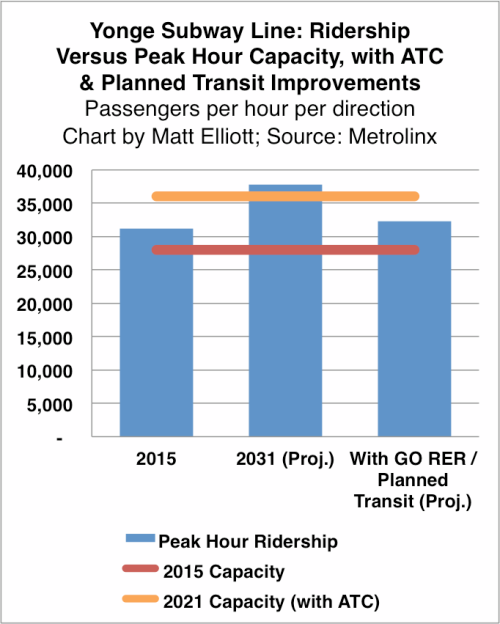What do you have to refute it other than your psychological evaluation?
Since you're interested in being York Regions pushboy, let's go through the Metrolinx report shall we:
The report states (and i'm paraphrasing): The Yonge Subway is currently operating ~11% over-capacity and despite ongoing initiatives which would provide some measure of relief (ie: ATC, the Spadina extension, and Smartrack), ridership is expected to reach capacity in 15 years.
-This implies that the Yonge subway will be at capacity by the time any kind of extension of the Yonge line is built
The report states (paraphrasing once again): GO RER would not significantly alleviate congestion on the Yonge line, thus providing a marginal offsetting effect on the Yonge line
-This implies that GO RER and the DRL are two different beasts. The former would not have as big as a relieving effect as the latter. However this can change depending on the price structure of GO RER.
The report states: A full-length relief line is the most effective long-term solution to relieve congestion on the Yonge line
-This implies that the DRL would be the project which would allow enough relief to allow for additional capacity to be brought into the Yonge line (ie: Yonge line extension)
The report states: ATC, the Spadina extension, and GO RER will be enough to meet 15 year demand.
-This implies that these 3 projects will provide sufficient capacity up until the Yonge line reaches capacity again in 2031. Issue is, no one knows exactly when GO RER will be operating (it can be 2021, 2025,2027, etc...) we cant say for sure. ATC and the Spadina extension alone wont provide sufficient capacity for a Yonge line extension to
be built.
Thus in sum, the currently funded projects will be sufficient to meet capacity for the next 15 years. The Yonge extension would be operating AFTER 2031 in all likelihood, and by that time the Yonge line will be operating over capacity once again. I well aware of what the Metrolinx report stated, but you seem to be interpreting it in a way where the Yonge extension can proceed with no issues whatsoever.
Here is a chart if my explanation wasnt good enough for you:
